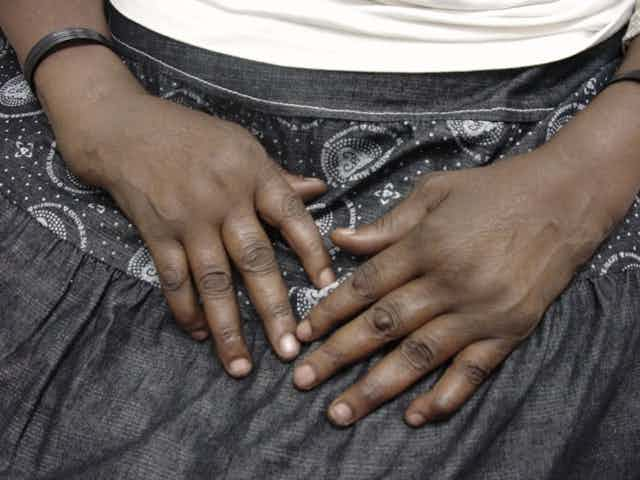In South Africa, studies show that patients suffering from rheumatoid arthritis can wait up to a year to be diagnosed and referred for therapy. In this time, their condition degenerates. Inflammation in their joints makes them painful, stiff and swollen. This leads to joint destruction and eventually disability before they have even been treated.
Rheumatoid arthritis affects almost one in every 100 adults worldwide. Although it affects both men and women, women are more likely to suffer from the chronic disease. Symptoms start showing between the ages of 30 and 50.
Relatively little is known about rheumatoid arthritis in the developing world because most research around the disease has been conducted in developed countries. The few studies that have been done in Africa in the past have suggested that rheumatoid arthritis is uncommon and that people have less severe symptoms than those in the developed world.
Doctors working in the field in South Africa have a different experience.
Getting the local picture
Our study at two South African state hospitals has filled some of the much needed gaps around the disease locally. It has described the changes patients experience in the disease activity, their physical functionality and quality of life.
There are no recent studies of the prevalence of rheumatoid arthritis in South Africa.
Analysing the patients we found that after 12 months of therapy, despite an overall improvement, the inflammation in the joints of just under a third of patients did not achieve a significant reduction. Up to 20% of patients were lost to follow-up treatments and another 20% did not take their treatment as prescribed.
Like those who suffer from rheumatoid arthritis in the developed world, over a third of patients suffered from depression and had blunted participation in social activities, poor emotional well-being and low energy levels. Patients who were most at risk of suffering from depression were those who were unemployed, had a low level of formal education, high levels of pain and disability.
But it is hard to measure the relationships between poor mental health and active disabling disease. This is because pain and physical impairment can lead to depression but depression in turn is likely to hinder physical activity, adherence to therapy and increase pain perception. When patients are unable to do simple daily tasks like cooking, visiting family or neighbours, shopping or gardening, they are at risk of developing depression.
Poor people suffer more

Studies in other parts of the world have shown a similar relationship between depression and pain, physical disability and socio-economic factors. A recent study in San Francisco showed rheumatoid arthritis patients who were poor and had a significant physical disability were a “vulnerable population” at high risk for mental ill-health.
Poverty impacts on rheumatoid arthritis because patients have:
delayed starts to their treatment as they access health care institutions late
lack of awareness of symptoms and treatments available, and
limited access to health care facilities.
Less educated patients also seldom use or access physiotherapists and occupational therapists. This could contribute to worse outcomes. But lifestyle factors associated with poverty, including unhealthy diets and lack of exercise, smoking, stress and less support from friends and family may also worsen outcomes.
There is also the challenge of patients living in areas with a lack of infrastructure. Patients feel their physical disabilities more profoundly when they have to walk long distances because of inadequate public transport, or carry water and use outside toilets.
No cure, but treatment strategies work
Although there is no cure for rheumatoid arthritis, new treatment strategies mean that the disease is easier to control than ever before. One such strategy is early and aggressive therapy to stop the inflammation before irreversible joint damage has occurred. This allows better control of the disease and reduces disability.
Some experts suggest rheumatoid arthritis should be treated like a cancer with very strong initial therapy until the disease is in “remission”. At this point lower doses of drugs can effectively keep the disease at bay.
Drugs used to treat rheumatoid arthritis are known as disease modifying anti-rheumatic drugs. These include methotrexate, chloroquine, sulphasalazine, and recently, biologic therapy.
Although anti-inflammatory drugs may help the pain and stiffness, they do not stop the disease progression and should not be taken without the anti-rheumatic drugs therapy. Corticosteroids (prednisone or cortisone tablets) may be useful early in the disease but generally only in combination with the anti-rheumatic drug therapy. These drugs have side-effects if used in high doses for prolonged time.
Early diagnosis of rheumatoid arthritis can be difficult, especially in the early phases. The diagnosis is based on symptoms, a clinical examination and a blood test. But this is also the three “S” approach that can help early detection. This includes early morning stiffness of more than 30 minutes, swelling or the squeeze test where it pains when knuckles or toes are firmly pressed together. Patients with some or all of those symptoms should be investigated.
All the drugs are available in South Africa and other African countries. But access to biologics is limited due to its cost and side effects, which particularly includes an increased risk of tuberculosis.
More action needed
Our studies highlight the many unmet needs and areas that need action in South Africa. This includes referring patients with inflammatory arthritis to specialist centres to start therapy sooner.
A more aggressive treatment strategy is also needed. Patient-centred programmes to improve physical function and adherence to treatment are important.
And lastly, more awareness of the high risk of depression among patients, particularly those from low socio-economic backgrounds, is needed. These patients should be referred to psycho-social services such as counsellors, social workers and psychologists to yield better outcomes.

